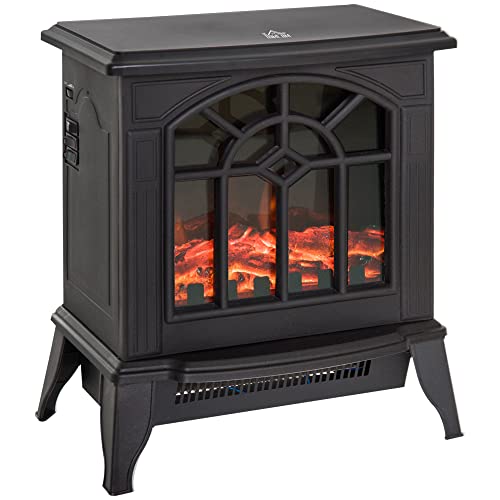 How to Get the Most From a Wood Burner Fireplace
How to Get the Most From a Wood Burner FireplaceWood stoves, unlike traditional open fireplaces, are engineered to use wood for combustion. This allows them to meet stricter emission regulations.
Wood burning stoves provide dancing yellow flames, cosy crackling sound and that innate sense of warmth. The smoke that is generated contains toxic air pollutants like formaldehyde and benzene as well as polycyclic aromatic hydrocarbons.
Efficient
Fireplaces and stoves that burn wood provide a beautiful and natural heat source to the home, and they are extremely efficient. A good quality wood burner can be able to achieve an Ecodesign rating as high as 77%. With the rising cost of energy, it is important to ensure that you get the most benefit from your log burner - the good thing is that this is more simple than ever!
The amount of moisture in wood is one of the main factors that determines how efficient a wood-burning stove is. This is why we suggest only using seasoned wood that has been dried for at least one year, but more often two years. The dryer the wood is the more efficiently it burns, which means less smoke and less harmful emissions.
A wood burning stove offers the advantage of being a low-carbon fuel source, which is beneficial to the environment. When you purchase locally-sourced wood, you can also help to contribute to the active management and conservation of woodlands. This is beneficial for wildlife.
The only thing a wood burning stove requires in terms maintenance is to regularly remove and dispose of the ash. It's a bit of a hassle however it is worth it to get the best heat from every log. In addition that if you wait a couple of days for the ashes to fully cool and then reuse them to make an eco-friendly and non-toxic ice melt. They can also be used to polish jewellery or absorb the odors.
A wood-burning fireplace is an old-fashioned classic. Although they're less well-known than gas fireplaces, the appeal and appeal of a roaring fire cannot be ignored. They're great for snuggling in the cold winter evenings and are a great method of creating a warm and inviting space in the heart of your home. A high-quality wood stove will pay off for many years. Contact us today to learn more about how our expert chimney sweeps can help you get the best out of your stove.
Low Carbon
Wood burners that burn cleanly and efficiently are the most effective way to save money while keeping your house warm. As an added benefit they also aid in local woodland management, a excellent way to help the wildlife that lives in your area.
Wood-burning fireplaces and stoves create very little pollution if they are properly maintained and are used with dry, seasoned firewood. However, if they're not maintained well or using wood of poor quality, the smoke produced by them contains fine particles (known as particulate pollution) which can cause irritation to the lung and other organs. Carbon monoxide, toxic air pollutants such as benzene and formaldehyde and polycyclic aromatic hydrocarbons are also in the. Inhaling air pollution can cause lung irritation and cause asthma attacks, wheezing, coughing and lung irritation. It may also cause heart disease, cancer or premature death.
Some people worry that using a wood burning stove could contribute to climate change however this isn't necessarily true. Burning wood produces energy that is carbon-neutral. Throughout the lifetime of a tree it absorbs carbon dioxide, and when burned the absorbed carbon is released back into the atmosphere.
The wood is produced locally, which reduces the amount pollution that is produced during the transport process. It is also essential to use high quality woods that are seasoned and seasoned as they will provide an extended and even burn than softwoods.
Modern wood stoves, like those manufactured by Charlton & Jenrick, emit much less pollution than older stoves. They are certified to meet 2020 EPA standards that are significantly stricter than earlier emission limits.
All wood-burning stoves must be fully vented to the outside of your home to ensure they do not create a build-up of exhaust in your house. By keeping flames above the logs and making sure you make use of dry, seasoned wood, all our current clean burn and DEFRA exempt stoves can produce extremely clear exhaust and have particle levels of 60 percent or less below the DEFRA limit.
A wood burning stove with a catalytic converter or a hybrid unit can provide the best low-carbon option for heating. These units re-ignite gases and particles from the initial combustion in a second stage by mixing them with superheated air. The remaining gases and particulates are transferred to a catalytic unit for a final third combustion. This further reduces emissions to levels far below government standards.
Clean Burn
Cleanburn wood stoves are made to burn fuel with the highest efficiency possible. This results in minimal particles emitted into the atmosphere when burning wood. The air management system of the stove controls the intake and ventilation of gases, ensuring that the combustion process occurs in a sealed and controlled environment. It also regulates the flame's height to maximise heat output and minimise emissions.
This means that your chimney and surrounding area will be cleaner than older stoves. Particulate matter (also known as particle pollution) caused by incomplete combustion of wood can cause respiratory problems like coughing and wheezing in people and can lead to the development of heart disease, stroke, diabetes and other serious health conditions. Wood burning is also a contributor to poor air quality in cities.
The smoke from poorly combusted wood is a mixture of fine particulate pollution and hazardous air pollutants like carbon monoxide volatile organic compounds, nitrogen oxides, benzene formaldehyde and polycyclic aromatic hydrocarbons. These particles can get into the lungs, as well as other organs, causing discomfort and injury, and even death. Airborne dust can also contaminate the surfaces of your home, and can give the impression of a rough surface to rooms.
When using your wood-burning fireplace, it's important to only use firewood of the highest quality that has been seasoned and dried. The most efficient woods for heating are hardwoods such as beech, ash, and oak. Hardwoods are dense and BTU content. They also offer more heat than softwoods.
Contact your local authority to determine if they have any rules concerning wood burning. These rules may include rules on odors and nuisances and visible smoke emissions or smoke opacity restrictions.
It is crucial to keep the glass of a wood stove that has glass fronts free of dirt and deposits. This can be done with a dry cloth or oven cleaner spray. You can also add bicarbonate soda and water to the glass.
Regular maintenance of your stove and chimney is also crucial. Regular chimney cleaning is required to get rid of creosote and to ensure that the flue is working correctly. It is also recommended to note the dates for periodic inspections on your calendar. This will allow you to prevent costly repairs and extend the life of your wood burner.
Low Maintenance
Many people choose to install wood burning fireplaces due to the warmth and natural beauty they provide. However, this kind of fire requires a bit of upkeep and maintenance. The chimney, flue, and stove can all be the cause of house fires if not cleaned and maintained regularly. They also provide warmth in the event of an electrical outage, especially during winter storms when tree branches can fall and power lines can be damaged.
If you use a wood stove to heat your home, you can reduce your carbon footprint as compared to other fossil sources of energy like gas. Modern wood stoves, inserts, and fireplaces are designed to comply with EPA standards (Environmental Protection Agency) which means they emit very little carbon dioxide. The more well-seasoned the wood is, the more efficient it will be which means you'll burn less of it to produce the same amount of heat.
The fireplaces require some attention and maintenance. They must be kept clear of the combustible materials and have a screen in place. Keeping the grate clear of debris and ash will allow airflow and prevent the fire from dying out too quickly and keep your indoors clean. It is recommended that your chimney and stove cleaned at least twice a year to avoid creosote accumulation that could create an fire hazard or blockage and limit circulation.
A wood-burning stove will need to be kept in good order and it may take time for a beginner homeowner to understand how to light, ignite and maintain a steady fire in the fireplace. Once you've mastered the art, your wood burning stove will be an ideal source of warmth and comfort in your home.
Wood burning fireplaces have been in use in one form or another for more than 500 years. They've gained popularity because of their efficiency, sustainability and the natural warmth of real wood. If you're thinking of buying the purchase of a new heater, consult with your local certified Regency dealer to find out more about the benefits of an insert or stove made of wood for your home.







